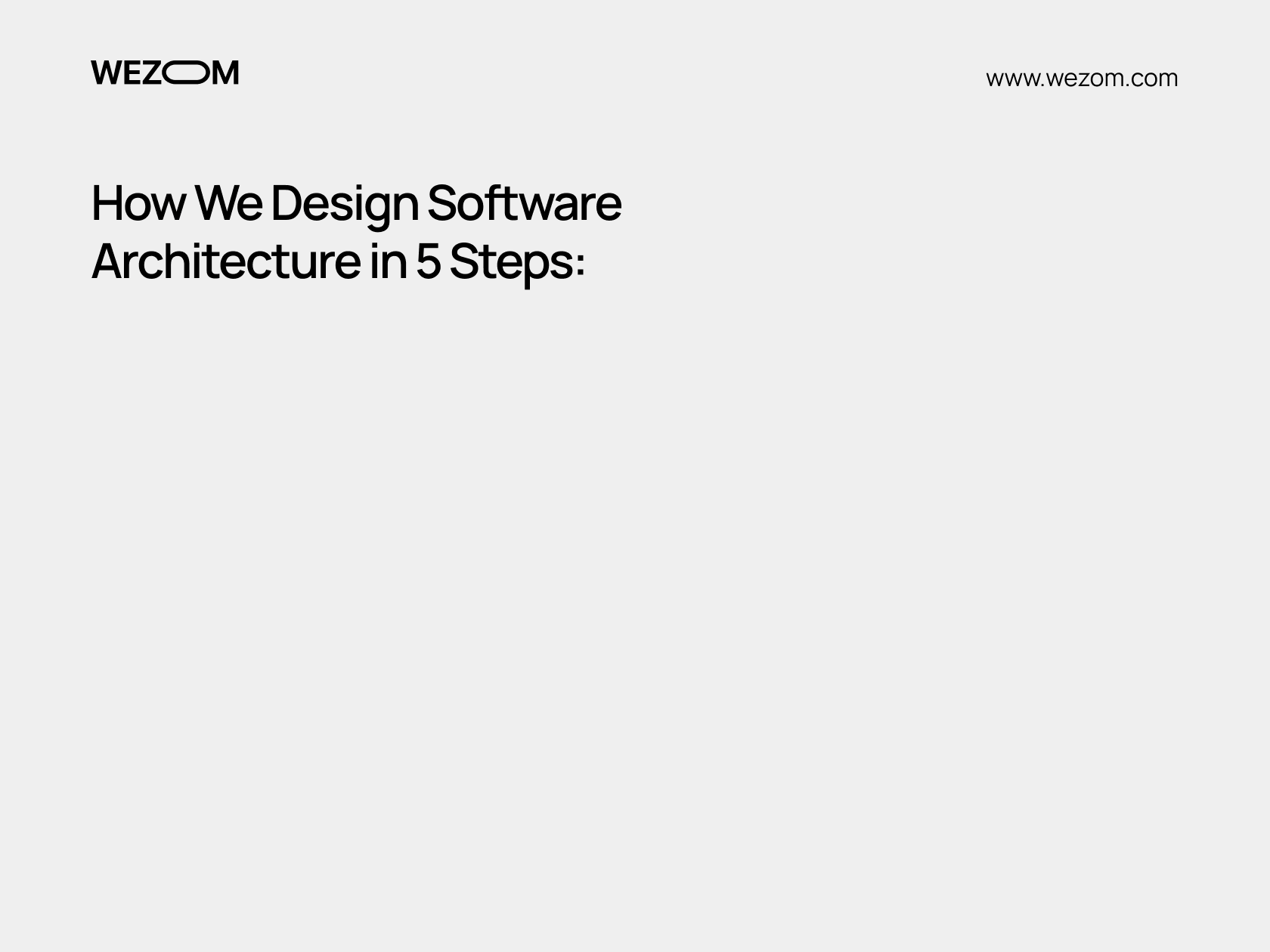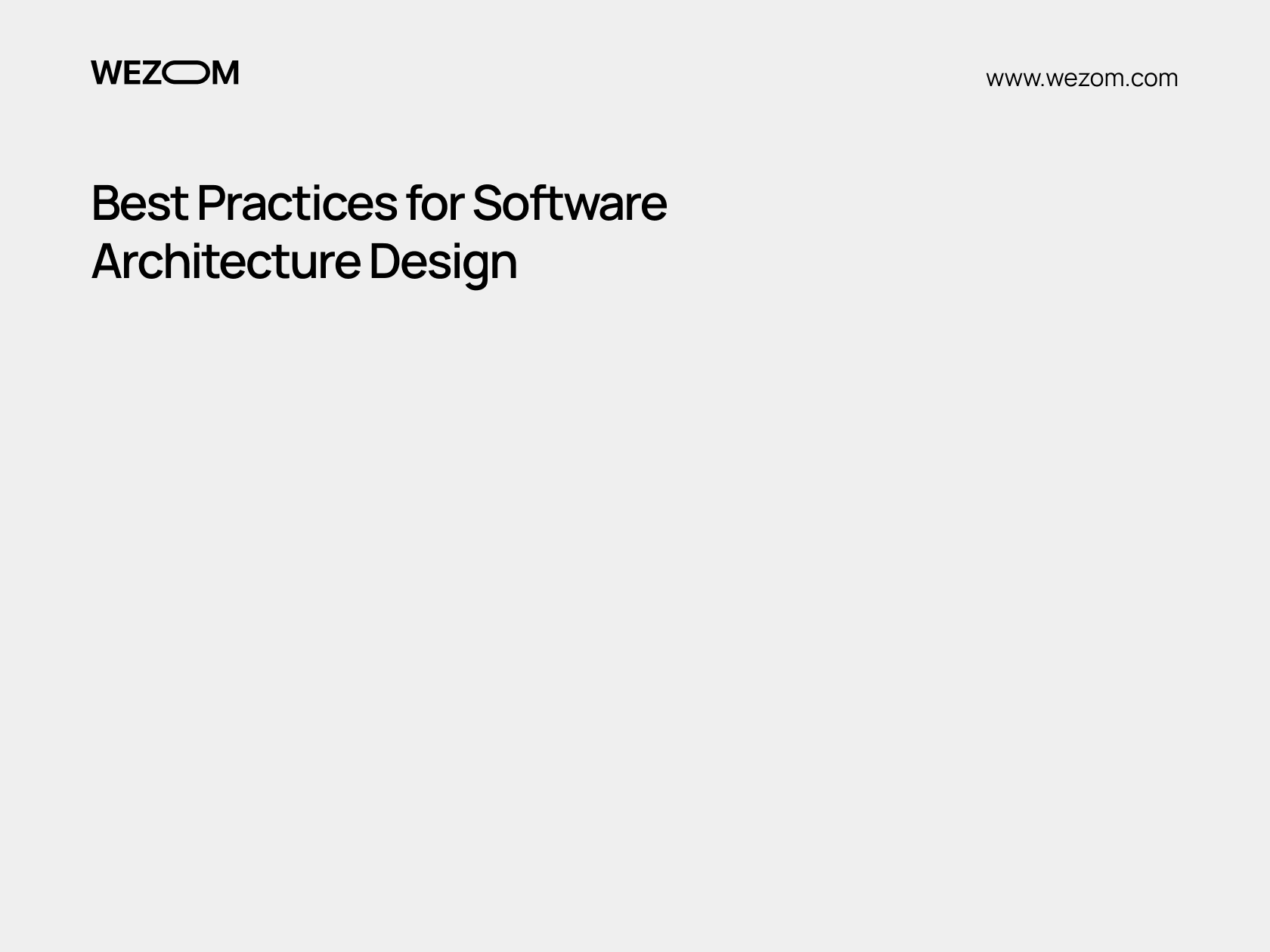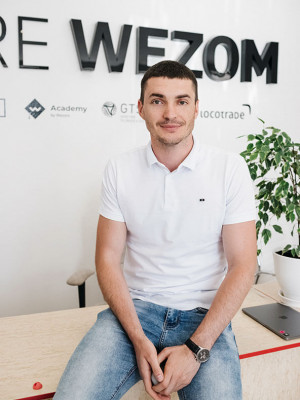As you may know, creating modern software usually requires a lot of effort from developers to ensure its competitiveness and overall viability for many years. Not the least role in this is played by the correctly chosen architecture.
Indeed, being one of the initial stages of the application development process, app architecture design defines the connection of the individual components of the application, as well as the predisposition to its further scaling. In this article, we will explain to you how we choose the architecture of software application and also share our best practices.
What is Software Architecture?
Architecture in software engineering are a comprehensive concept aimed at building logical relationships between individual components and processes of an application. Thus, the architecture defines the principles according to which individual application functions work and interact with each other.

Software Architecture Principles: S.O.L.I.D.
The S.O.L.I.D. principles is a set of five rules of software development that apply to object-oriented programming, one of the most popular architectural patterns, which is based on four essential elements: classes, objects, methods, and attributes.
Let's take a quick look at these principles:
- S – Single Responsibility. Each class should be responsible for only one operation. If a class is responsible for several operations at once, the likelihood of bugs increases. Thus, by making changes to the program code concerning one of the operations, the developer may unwittingly affect others.
- O – Open-Closed. Classes should be open for extension but closed for modification. When you change the current behavior of a class, those changes affect all systems that interact with that class. If a class has to perform more operations, then the ideal option is not to replace old ones with new ones but to add new ones to existing ones.
- L – Liskov Substitution. Any subclass must be able to process the same queries as the superclass and produce the same type of result.
- I – Interface Segregation. Any class should perform only those operations that are necessary to implement its functions. All other operations should either be removed completely or moved if there is a chance that another class will need them in the future.
- D – Dependency Inversion. Top-level modules should not depend on lower-level modules. Both must depend on abstractions. At the same time, abstractions should not depend on details, but on the contrary, details should depend on abstractions.
By following all of the above principles, the application code is better scalable and less exposed to the risk of the emergence of hard-to-fix bugs.
Good Software Architecture Characteristics
The positive qualities of software architecture solutions include the following:
- Fault tolerance. The software architecture must ensure the proper operation of the app without freezes, errors, or failures.
- Reliability. The created architecture must guarantee the stable operation of the application and unhindered access to all its functions and capabilities, regardless of the deployment environment, the type of user device, and the number of simultaneous users interacting with it.
- Convenience of updates. Developers should be able to reach scalability in software architecture with the minimum effort and without affecting its existing functionality (unless otherwise intended).
- Safety. The architecture should minimize the likelihood of vulnerabilities occurring in the program code that could lead to user data leakage, blocking of user devices, and other troubles.
- Cleanliness of the program code. The architecture should allow developers to create clean and concise code to minimize the need for further refactoring.
- Ease of testing. The architecture should allow the team to seamlessly test all components of the application and spend as little time on it as possible.
- Modularity. The modern software architecture has to ensure that the system can be divided into separate functional modules, each of which is responsible for performing one specific task.
How We Design Software Architecture in 5 Steps
It's time to find out what software architecture design approach we have adopted after many years of practice.

1. Have a clear understanding of your requirements
Any process of working on a software solution begins with collecting functional requirements, which form the basis for programming architecture design. Typically, to determine functional requirements, we use mindmaps, which allow us to visualize the components of the future application with the processes that should be performed with them. We also note that the stage of determining the functional requirements for the project is the starting point for drawing up the technology stack list. For example, you can learn about how to choose a logistics technology stack.
2. Start thinking about each component
As practice shows, some requirements may be difficult or even impossible to implement given the budget and time constraints of the project, so first, we think about the key components of your application and, in particular, what they need to be to meet your vision of the final product. Sometimes, when working on non-standard projects, it makes sense to first implement an MVP and only then begin to build up secondary functionality to sharpen the solution to higher compliance standards.
3. Divide your architecture into slices
At this stage, we consider your project in both vertical and horizontal “slices”. In particular, by “vertical slice”, we mean the order and number of layers of an application that are activated step by step when the end user performs a specific action in this application (for example, user interface->business logic->database), while “horizontal “slice” defines the main components (modules) of the application, each of which will be responsible for performing a specific task. Depending on the complexity of the project, the number of layers and components may increase, which ultimately must be reflected in more complex software architecture models.
4. Prototype
Based on the results obtained in the previous stages, we start developing a prototype. This approach allows our development team to quickly receive feedback from stakeholders and make the necessary changes with minimal resource costs. Note that it is crucial to store all versions of prototypes to track changes and, if necessary, quickly roll back the project to a version that best meets the design requirements.
5. Identify and quantify non-functional requirements
Apart from functional requirements, there are also non-functional ones. These include design characteristics such as performance, maintainability, extensibility, reliability, operational factors, portability, etc. They are responsible for the constraints and objectives that developers must follow.
In essence, these are usually high-level architecture design requirements that must be met once the prototype based on the functional requirements has been validated. An important recommendation for the formation of these requirements is their accuracy (for example, “high responsiveness” is an imprecise requirement, while specifying the minimum acceptable speed of an application’s response to user requests will be an accurate one).
If you want to consider a special case of implementing the above steps, we invite you to check our case study on building ERP architecture.
Best Practices for Software Architecture Design
Finally, we'd like to share some best practices on the software development architecture that we apply from one project to another.

Visualize your design
We have already said above that we often use mindmaps at the stage of creating a project architecture, which allows us to visually imagine how the individual layers and components of the application should be connected to each other and how the processes between them should be organized. In particular, our team builds diagrams and only then starts implementing the prototype.
Remember that the first design is only the first iteration
You need to understand that even a highly detailed prototype based on functional requirements is just the first version of the architecture of your application, and in the future, there will be others that will better meet these requirements, as well as those requirements that relate to a higher level (that is, non-functional).
In particular, subsequent versions of prototypes arise on the basis of the received feedback (this may be the opinion of stakeholders or, for example, representatives of a focus group consisting of potential users of the product). As testing progresses, feedback can change and become more accurate. Therefore, you will be able to build more and more new versions of the architecture that, at some stage, will lead you to the optimal one.
Be cautious of scope creep
Sometimes, the full implementation of the functional requirements for a project in architecture entails an increase in the scope of work and its complexity for the development team, which, in turn, inexorably causes an increase in the project budget and an expansion of its deadlines.
Since these consequences are often irrational from a business point of view, it is important for you to promptly compare your prototype based on functional requirements with non-functional ones. This will reasonably limit you in your intentions and allow you to find the best balance between the technical “ideality” of the architecture and the resource costs necessary to bring it to life.
Keep boundaries and interfaces in mind
When building a project architecture, you must understand how it can be divided into levels and components. This will help you to assign responsible team members to implement each of them. Therefore, you will be able to speed up the launch of your project.
Conclusion
Now you know how to architect software and what best practices can be applied to this process. If you are looking for a team that will guide you through the initial stages of developing your project to its deployment, feel free to contact us. In each of our products, we always follow the four constants – security, scalability, capacity, and servers – which ensure the superior quality of the final solution and its continued viability and competitiveness for many years to come.

